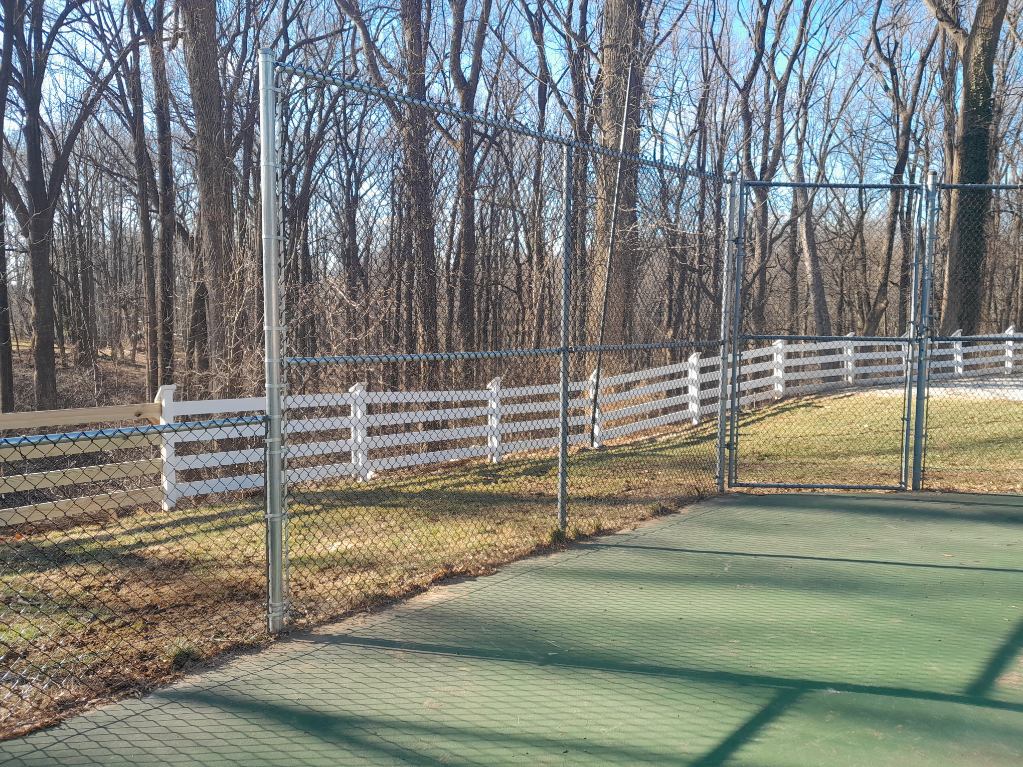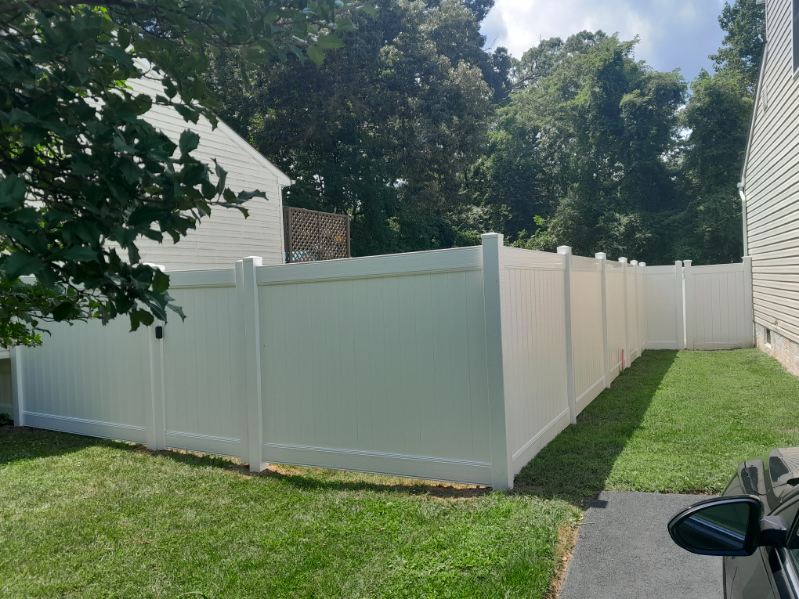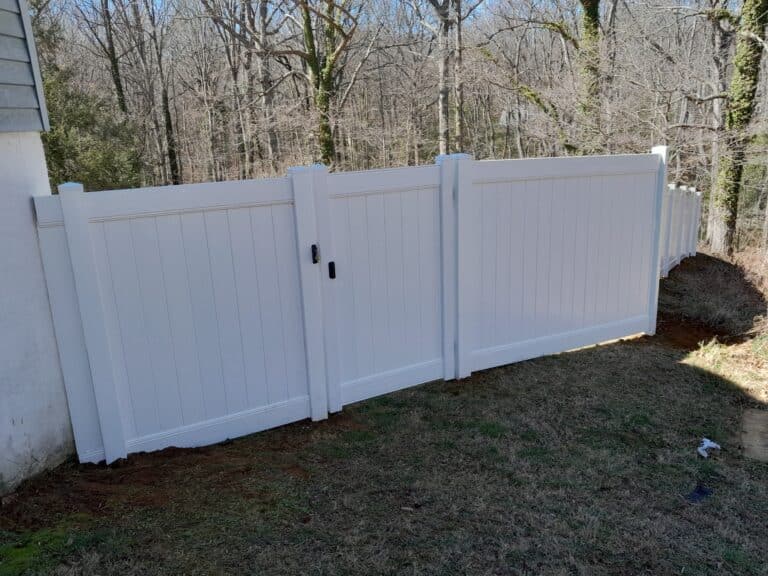Spring arrives in town with renewed energy, but Maryland’s challenging winter conditions can leave your fence vulnerable to damage. After months of frost cycles and fluctuating temperatures, your Glen Burnie property requires careful fencing inspection to ensure safety and longevity. Understanding what to examine during your spring fence inspection can save you from costly repairs and protect your investment.
Understanding Glen Burnie’s Climate Impact on Fencing
Glen Burnie’s location near the Chesapeake Bay creates unique challenges for fence durability. Historical weather data shows the county receives approximately 49 inches of annual precipitation. Winter snow accumulation averages 14 inches annually, creating conditions that stress wood, steel, and concrete components through repeated freezing and thawing cycles.
Wood fences face particular challenges from the region’s humidity levels, which average 64% annually. The USDA Natural Resources Conservation Service documents soil conditions in Anne Arundel County that contribute to ground movement affecting fence stability. Steel and iron components are especially susceptible to rust formation during spring’s wet season when humidity peaks at 69%.
Spring weather patterns show variable conditions, with April experiencing approximately a 37% chance of precipitation. This moisture creates conditions where water accumulates around fence components and speeds up material degradation near major transportation corridors like Route 3 and Interstate 97.
Essential Spring Fence Inspection Checklist

Visual Assessment Points
Begin your inspection by walking your yard systematically, checking both aesthetics and structural integrity. During your assessment, focus on these critical areas:
- Post alignment and stability – Check each fence post for signs of leaning or movement; posts should remain perfectly vertical without wobble when tested
- Hardware condition – Look for loose or missing screws, bolts, and brackets that may have loosened during the winter’s expansion and contraction cycles
- Wood deterioration signs – Examine wood surfaces for soft spots, discoloration, or fungal growth that indicates rot, paying special attention to areas near ground level where moisture accumulates
- Metal corrosion assessment – For chain link fencing, inspect for rust spots, particularly around welds and connection points; wrought iron and steel components require careful examination for corrosion that may compromise structural integrity
- Panel connections – Verify that picket fence installations maintain secure attachment points between posts and panels
- Gate functionality – Test each gate’s operation, checking for proper alignment and smooth movement; sagging gates often indicate post movement or hardware failure requiring immediate attention
- Foundation integrity – Examine concrete footings around posts for signs of cracking or separation that could allow moisture penetration and accelerate post deterioration
- Security assessment – Evaluate whether winter damage has compromised the fence’s ability to provide proper access control and visibility for your property
This systematic visual approach helps identify issues early, protecting your fence while ensuring compliance with local building standards throughout the Glen Burnie area.
Structural Stability Testing
Professional fence contractors recommend performing physical stability tests on fence posts. Gently push against each post at shoulder height—any movement indicates potential foundation issues requiring professional evaluation. This wobble test helps identify posts affected by soil shifting common in areas near Sawmill Creek.
Check panel attachments by examining connection points between posts and panels. Loose connections compromise fence effectiveness and create safety hazards. For picket fence installations, verify that individual pickets remain securely fastened and properly aligned.
Concrete footings around posts should show no signs of cracking or separation. Damaged concrete allows moisture penetration that accelerates post-deterioration in Anne Arundel County’s documented soil conditions.
DIY Maintenance vs. Professional Intervention
There are some simple maintenance procedures you can do yourself around your home, such as tightening loose hardware, cleaning your fence surfaces, and applying a protective treatment to wood pieces. In Maryland, preserving the firmness and appearance of quality lumber requires suitable care throughout the year.
Professional intervention from Glen Burnie fence experts becomes necessary when inspection reveals structural damage, extensive rot, or post-instability. A licensed fence company or general contractor possesses the expertise and equipment required for major repairs, ensuring compliance with Anne Arundel County building codes. Complex issues like post replacement or panel reconstruction require professional knowledge of local soil conditions and construction standards.
Safety considerations make professional evaluation essential for fences showing significant damage. Compromised fencing creates liability concerns for property owners, particularly around porch areas, decks, and patio spaces where safety is paramount.
Seasonal Maintenance Calendar for Optimal Fence Care
Spring represents a critical inspection period following winter’s challenges. Based on regional climate data, scheduling comprehensive inspections between mid-March and early April allows time for repairs before peak outdoor season usage.
Summer maintenance focuses on protective treatments and minor adjustments. Apply wood preservatives during dry periods when humidity levels decrease. Monitor fence performance during summer storms that frequently impact the Glen Burnie area, ensuring your fence and landscape work together harmoniously.
Fall preparation involves cleaning and applying protective coatings before winter’s arrival. Remove debris accumulated around fence lines and trim vegetation that might retain moisture against fence materials. This preparation helps minimize winter damage and extends durability.
Winter monitoring requires periodic checks after severe weather events. Document any visible damage for spring repair planning, but avoid attempting repairs during freezing conditions when materials become brittle.
Local Environmental Considerations
Glen Burnie’s proximity to waterways creates additional moisture challenges that affect fence longevity. The USGS maintains active monitoring at Sawmill Creek at Glen Burnie, demonstrating the area’s comprehensive water management systems. Properties near local waterways experience higher humidity levels, which speed up material degradation.
The area’s mature tree coverage along Furnace Branch Road and other residential areas creates microclimates that affect fence performance. Shaded areas keep moisture longer, requiring more frequent inspection for rot and fungal growth. Areas with full sun exposure may experience sped up wood drying and cracking.
Current NOAA marine forecasts show variable wind patterns for the Chesapeake Bay. These conditions can stress fence panels and gates, making a regular inspection of hardware especially important for properties with exposure to changing wind conditions that affect visibility and structural integrity.
Professional Fence Care in Your Community
Our experienced team takes pride in understanding local climate challenges and building requirements, ensuring your fence receives appropriate care with exceptional customer service. We offer flexible payment options and competitive price points for comprehensive fence maintenance solutions that protect your property investment and deliver lasting customer satisfaction through quality workmanship and reliable service.
Frequently Asked Questions
How often should I inspect my fence in Glen Burnie?
Conduct comprehensive inspections twice yearly—spring and fall—with monthly visual checks during severe weather seasons. This schedule helps identify problems before they become costly repairs.
What are the most common fence problems after Maryland winters?
Post loosening from freeze-thaw cycles, wood rot from moisture accumulation, and hardware corrosion top the list. Gate sagging and panel separation also occur frequently due to ground movement.
When should I call a professional fence contractor?
Contact professionals for post instability, extensive rot covering multiple panels, or structural damage affecting fence integrity. DIY repairs should be limited to minor hardware adjustments and cleaning.
What warranty options are available for fence repairs?
Professional fence contractors typically offer warranties on materials and workmanship ranging from one to five years. Ask about coverage terms and what repairs qualify for warranty protection.
How do I choose between different commercial fencing options for my property?
Consider your space requirements, design preferences, and local building codes. Professional contractors can assess your specific needs and recommend appropriate materials for long-term customer satisfaction.
When your spring inspection reveals issues beyond simple DIY fixes, All Around Fence LLC provides expert evaluation and repair services throughout Glen Burnie.





